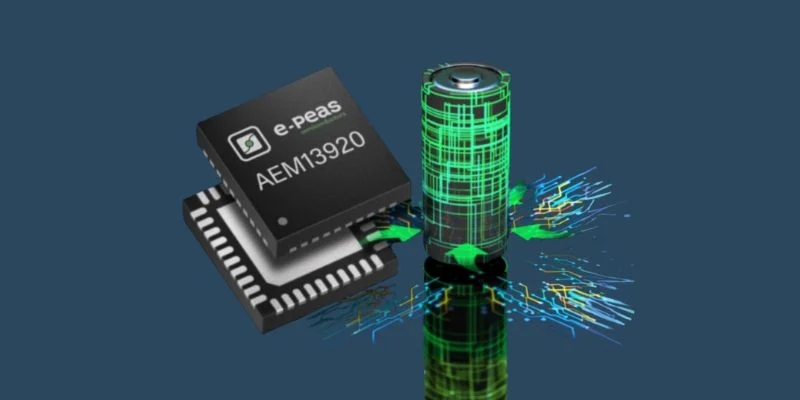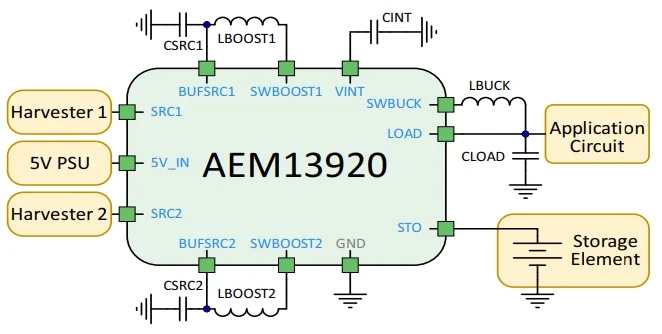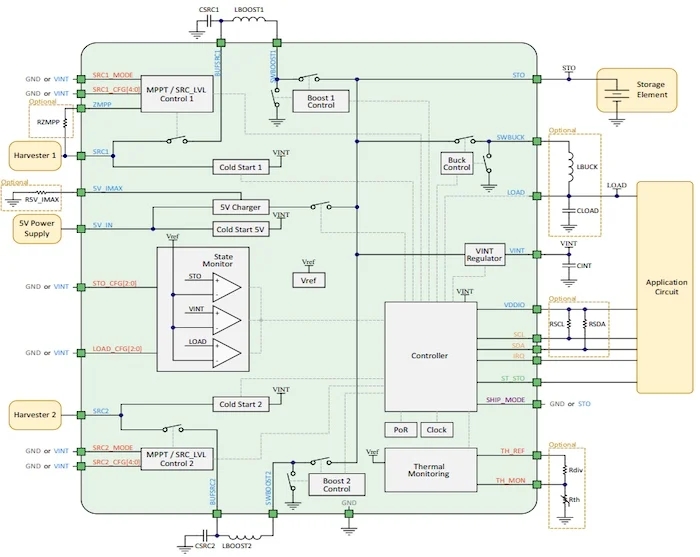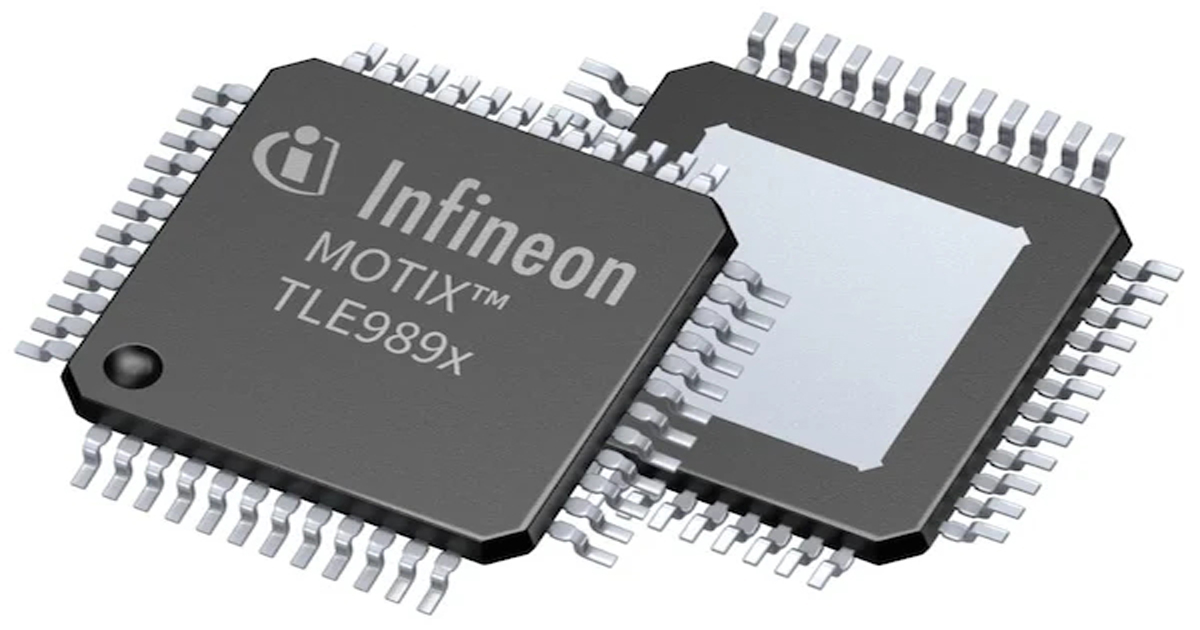E-peas Unveils First PMIC to Draw Energy From Two Sources at Once
The PMIC can pull from any combination of two sources: photovoltaic cells, a thermoelectric generator, an RF energy harvester, or pulsed (kinetic) energy sources.
With the promise of infinite battery life, the energy-harvesting field aims to transform how low-power electronics function. This week, E-peas announced a new power-management integrated circuit (PMIC) it claims is the industry’s first to simultaneously harvest energy from two disparate sources. 
The AEM13920 can extract DC power from two harvesting sources and store that energy in a rechargeable battery.
The AEM13920: A Dual-Source Energy Harvester
The AEM13920 PMIC’s (datasheet linked) most notable feature is its ability to accept simultaneous inputs from two independent harvested energy sources, such as photovoltaic cells, thermoelectric generators, RF energy harvesters, and pulsed (kinetic) energy sources. The PMIC can then store this energy in a rechargeable battery. E-peas claims the PMIC's source-to-storage and storage-to-load conversion efficiencies exceed 90%. This is a critical factor for designers aiming to maximize energy in low-power applications. 
A simplified application diagram of the AEM13920.
To further improve energy-harvesting performance, the PMIC features independent Maximum Power Point Tracking (MPPT) algorithms for each energy source. The MPPT algorithms dynamically adjust the electrical operating point of the devices to ensure they are operating as close as possible to the maximum power point, allowing for more intelligent and efficient energy harvesting. An ultra-low, cold-start input condition of 275 mV (minimum 5 µW) further enhances its adaptability to different energy-harvesting scenarios.
The PMIC is compatible with a wide range of storage elements, including lithium-ion and lithium-polymer batteries and supercapacitors. To provide more options when choosing the storage element, the PMIC supports various threshold voltages, including:
- Over-discharge voltage (VOVDIS): 3.00 V
- Charge-ready voltage (VCHRDY): 3.30 V
- Overcharge voltage (VOVCH): 4.12 V
Why Use Two Energy Sources?
What, exactly, is the benefit of a device harvesting energy from two disparate sources? E-peas claims this industry-first feature ensures continuous energy harvesting, even when one source is unavailable or inefficient, reducing system downtime. Dual-source harvesting also allows the PMIC to switch between different types of energy sources, allowing the system to operate close to optimal conditions and maximize energy capture.
A block diagram of the AEM13920. See page 16 of the datasheet (linked) for an enlarged image.
Designers can also make more adaptable systems with multiple energy-harvesting options, choosing the sources that are best suited for a specific application. Finally, although dual-source systems may have higher initial costs, their reliability and efficiency may lead to lower operational and maintenance costs over time, E-peas posits.
E-peas Aims for a Batteryless Future
By providing greater energy-harvesting solutions, E-peas envisions a world where IoT devices require no batteries at all. Instead, the company foresees a day when a supercapacitor or other less-intensive solution fits the bill. The end result of this company vision is devices with infinite power and a more sustainable future freed from the demands of the battery supply chain.
The AEM13920 is currently available for sampling. E-peas has also released an evaluation board for the PMIC.


.jpg)
